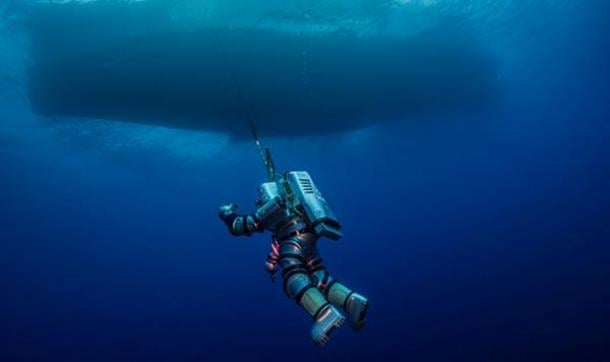
Unprecedented
exploration of Antikythera wreck yields new treasures
In the first underwater exploration
of its kind, a Greek and international team of divers and archaeologists have
used a new high-tech exosuit to reach deep waters in which the world-renowned
Antikythera wreck has lain for two thousand years. Their investigation
proved that remnants of the ships luxury cargo has survived for millennia on
the sea floor as new treasures have been retrieved from the depths. According
to a media release by the Woods Hole Oceanographic Institution (WHOI),
the rescued antiquities include tableware, ship components, and a giant bronze
spear that would have belonged to a life-sized warrior statue.
The Antikythera wreck, located off
the island of Antikythera in the Aegean Sea, is a famous underwater
archaeological site thrown into the spotlight in 1900 when researchers
discovered an incredible mechanical device, now known as the Antikythera
mechanism. The metallic device consists of at least 30 different types of
gears and is so complex that many consider it to be the first human-made
analogue computer. After decades of research, scientists were able to determine
that it shows the positions of the sun, moon, and planets as they move through
the zodiac, predicts solar and lunar eclipses, and even marked key events such
as the Pan-Hellenic games. The discovery of this unique form of ancient
technology, along with other treasures, including finely carved bronze and
marble statues, glassware, jewellery, and coins, led researchers to wonder what
else may lie within the shipwreck.
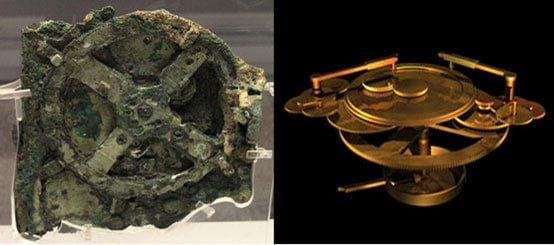
Left: The original Antikythera
mechanism (Wikipedia). Right: A reconstruction of the mechanism (anthonyokeeffe.com).
Over the decades, divers have
attempted to investigate the ancient shipwreck, but dangerous conditions caused
by the extreme depth of the submerged vessel prevented researchers exploring
the site fully. However, a newly developed exosuit, which allows divers to
descend to 300 metres for hours at a time without the need for decompressing
upon returning to the surface, has now allowed marine archaeologists to finally
return to the famous wreck.
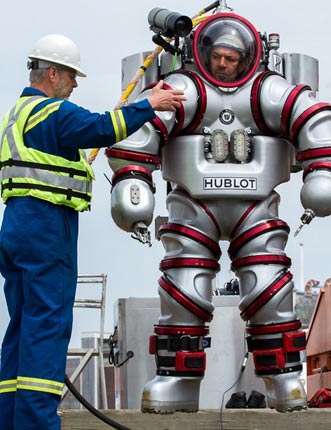
Researchers used a
newly-developed exosuit to explore the Antikythera wreck. Credit: Brendan Foley
During investigations between
September 15 and October 7, 2014, researchers created a high-resolution 3D map
of the site. Divers then recovered a series of finds which prove that much of
the ship’s cargo is indeed still preserved beneath the sediment.
“Components of the ship, including
multiple lead anchors over a metre long and a bronze rigging ring with
fragments of wood still attached, prove that much of the ship survives,” said
the WHOI in a
media release. “The finds are also scattered over a much larger area than the
sponge divers realized, covering 300 meters of the seafloor. This together with
the huge size of the anchors and recovered hull planks proves that the
Antikythera ship was much larger than previously thought, perhaps up to 50
meters long.” This would make the vessel the largest ancient shipwreck ever
discovered.
Additional discoveries included a
completely intact ceramic table jug, part of an ornate bed leg, and a 2-metre
long bronze spear, which is believed to have belonged to a giant statue. “In
1901, four giant marble horses were discovered on the wreck by the sponge
divers,” said the WHOI, “so these could have formed part of a complex of
statues involving a warrior in a chariot that was pulled by the four horses.”
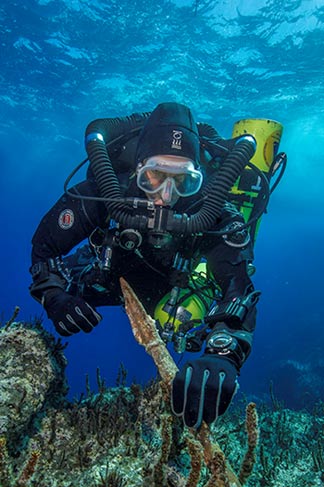
Return to Antikythera project
chief diver Philip Short inspects the bronze spear recovered from the
Antikythera Shipwreck. Credit: Brett Seymour, Return to
Antikythera 2014.
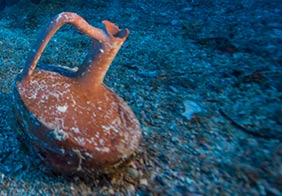
Divers discovered an intact "lagynos"
ceramic table jug. Credit: Brett Seymour / Return to
Antikythera 2014.
There has been speculation that the
vessel, which was probably travelling from the coast of Asia Minor to Rome when
lost, was carrying a soon-to-be-married woman and her dowry.
Archaeologists believe there are many
more items from the cargo still to be found and remain hopeful of finding
additional parts to the Antikythera mechanism, or other automata. They will be
returning to the site next season to continue explorations.
Featured
image: WHOI Diving Safety Officer Edward O'Brien "spacewalks" in the
Exosuit, suspended from the Hellenic Navy vessel THETIS during the 2014 Return
to Antikythera project. Credit: Brett Seymour / Return to
Antikythera 2014.
Location:
Antikythera, Greece



No comments:
Post a Comment